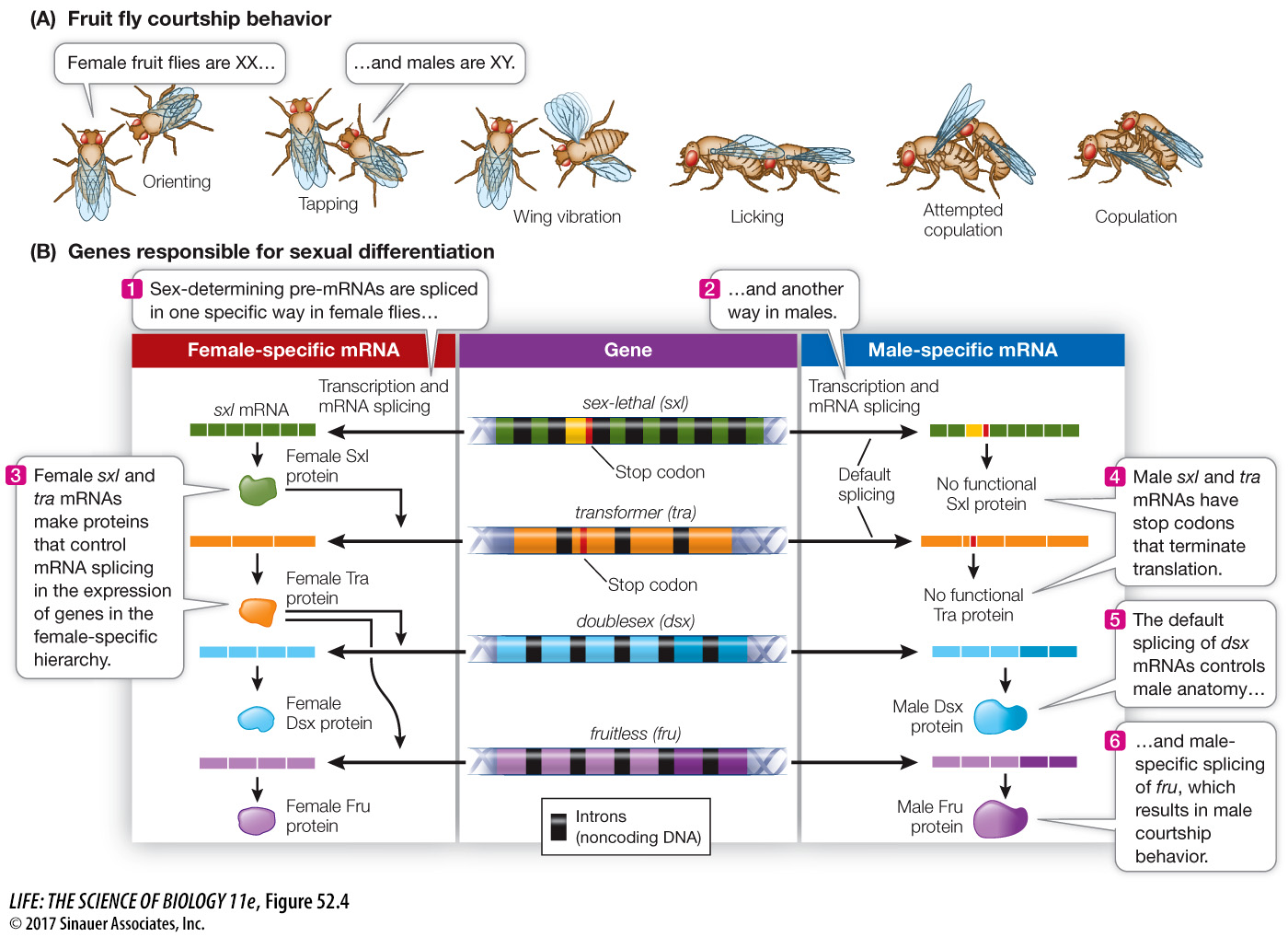Gene cascades can control complex behavioral phenotypes
Male courtship behavior in the fruit fly (Drosophila) is stereotypic, species-specific, and requires no learning—a classic fixed action pattern. When a male encounters a potential mate, he follows her, taps her body with his foreleg, extends and vibrates one wing, and licks her genitals (Figure 52.4A). The development of this complex male behavior is under the control of a single gene, called fruitless (fru), and the development of male anatomy is under the control of another gene, called doublesex (dsx). In both males and females, these two genes are part of gene expression cascades that differ in the splicing of the mRNA in the two sexes. Those splicing differences result in different dsx and fru gene products in males and females (Figure 52.4B). The female version of the Dsx protein controls the development of female anatomy, and the expression of fru in the male nervous system results in the organization of the neural circuitry controlling male sexual behavior.

Figure 52.4 The fruitless Gene (A) Male fruit flies display stereotypic, species-specific courtship behavior. (B) Sexual differentiation in Drosophila is controlled by a cascade of genes, including the fru gene, whose expression results in male sexual behavior.
There are two take-home lessons from this example. First, genes that control aspects of behavior, like other genes, are generally embedded in gene cascades that offer opportunities for simple genetic changes to alter the phenotype of even complex behaviors. Second, certain genes, such as dsx and fru, influence a range of other genes that contribute to complex behaviors. Modifications in any one of those genes or its expression can alter behavior. Thus even though no behavior is coded for by a single gene, alterations in single genes can influence behavior in ways that affect an animal’s fitness.

